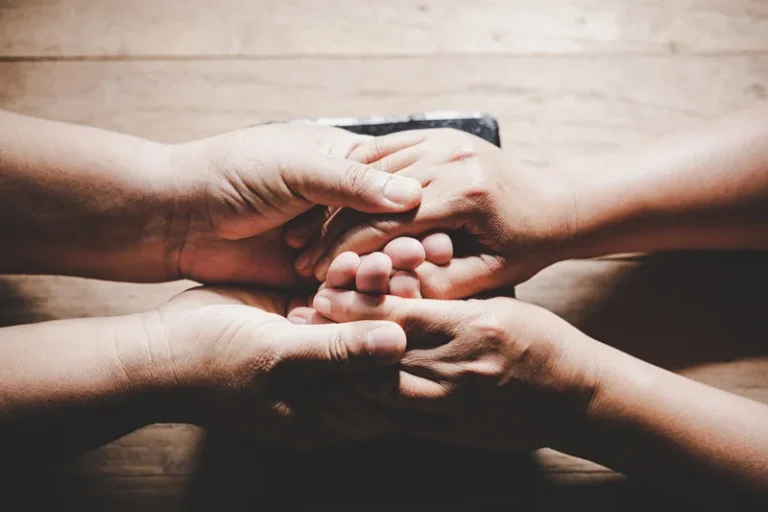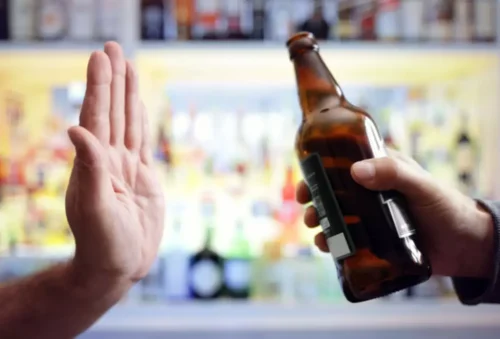- July 14, 2023
- Posted by: webwalk
- Category: Sober living
The physical changes to the pleasure-experiencing centers of the brain induce physical changes to the prefrontal cortex, weakening the capacity for decision-making and impulse control. If your drug use is out of control or causing problems, get help. The sooner you seek help, the greater your chances for a long-term recovery. Talk with your health care provider or see a mental health provider, such as a doctor who specializes in addiction medicine or addiction psychiatry, or a licensed alcohol and drug counselor. Drastic changes in mood can occur in substance use disorders, along with hypersensitivity and increased irritability.
- It is medically known as Wernicke’s Encephalopathy or Wernicke-Korsakoff Syndrome.
- Our sincere passion is helping people recover so that they can live full, meaningful and healthy lives.
- Healthcare professionals diagnose SUDs using criteria from the Diagnostic and Statistical Manual of Mental Disorders, 5th edition, text revision (DSM-5-TR).
- These may also appear on the legs, hands, or sometimes even feet.
Warning signs that a friend or loved one is abusing drugs
- SUD may also exacerbate symptoms of other mental disorders, and early drug use is a strong risk factor for the later development of substance use disorders.
- There is no shame in admitting that you need treatment for drug use; doing so can be life-saving.
- For example, combining drugs with similar effects (stimulants, depressants or hallucinogens) increases the impact on your body.
- Thankfully, you can discover when a friend or family member has become addicted to drugs by observing the following signs of substance use disorder in adults.
- A cocaine overdose can result in a stroke or heart attack, and it is a medical emergency.
- When you arrive, we begin preparing an aftercare plan for you and adjust it as necessary so you’ll be fully prepared when you leave our program.
Before approaching someone you think may have an addition, determine if the problem is a result of a single incident or a growing problem with the addiction. With the urgent need for mental health solutions, psychedelic treatments are developed carefully, while underground therapists offer a stopgap measure. Recovery is possible in the early stages, when signs of drug use infusions of the vitamin can restore thiamine reserves. But if thiamine deficiency is left untreated, neurological damage can become irreversible, and people experience a form of dementia. It is marked by hallucinations and other signs of psychosis, difficulties with memory, and confabulation, attempts to make up stories to cover gaps in memory.
Types of addiction
- Accidental overdoses result from either a young child or an adult with impaired mental abilities swallowing a medication left within their grasp.
- Prescription drugs are commonly misused substances by young people.
- We’d love the opportunity to help you during this overwhelming and difficult process.
- The ASI is typically used in gauging the type and intensity of treatment a person might need and as a measure of the success of treatment.
You find yourself rummaging through other people’s medicine cabinets in search of drugs. During the intervention, these people gather together to have a direct, heart-to-heart conversation with the person about the consequences of addiction and ask him or her to accept treatment. Opioids are narcotic, painkilling drugs produced from opium or made synthetically. This class of drugs includes, among others, heroin, morphine, codeine, methadone and oxycodone. Stimulants include amphetamines, meth (methamphetamine), cocaine, methylphenidate (Ritalin, Concerta, others) and amphetamine-dextroamphetamine (Adderall, Adderall XR, others). They are often used and misused in search of a “high,” or to boost energy, to improve performance at work or school, or to lose weight or control appetite.
- Reach out to your loved one’s healthcare professional if your answers point toward a possible addiction.
- Due to the toxic nature of these substances, users may develop brain damage or sudden death.
- Barbiturates are not used as much as they used to be; however, they are still sometimes employed to treat seizure disorders and during surgery.
Are You Feeling Suicidal?
Alcohol use is popular on social occasions, but it can be especially tricky to notice when social drinking slides into alcohol use disorder. It may be that a person consumes more drinks than usual in one sitting. Or a person might start consuming alcohol before a social event, or even early in the day. People developing problem use might look for socially acceptable reasons to have a drink, or they might start concealing their alcohol consumption from others around them. People use cannabis by smoking, eating or inhaling a vaporized form of the drug.

Signs of Drug Addiction in Adults
The degree of intensity for each sign may depend on how long the addiction has been going on. Here’s why these two Netflix series need to be on your mental health watch-list. Substituted cathinones, also called “bath salts,” are mind-altering (psychoactive) substances similar to amphetamines such as ecstasy (MDMA) and cocaine. Packages are often labeled as other products to avoid detection. Substituted cathinones, also called “bath salts,” are mind-altering (psychoactive) substances similar to amphetamines such as ecstasy (MDMA) and cocaine. Whether you’re looking for a specific type of rehab treatment, substance-related info., or additional guides, below are some of our most popular and recommended resources.

Being aware of any signs of dependency can help identify prescription drug problems at an early stage and help to prevent them progressing into an addiction. If you go too long without drugs, you experience symptoms such as nausea, restlessness, insomnia, depression, sweating, shaking, and anxiety. Eventually drug abuse can consume your life, stopping social and intellectual development. Recovery from drug addiction is a long process that often involves setbacks. Relapse doesn’t mean that treatment has failed or that sobriety is a lost cause. Rather, it’s a signal to get back on track, either by going back to treatment or adjusting the treatment approach.
Despite being aware of these harmful outcomes, many people who use drugs continue to take them, which is the nature of addiction. It’s common for a person to relapse, but relapse doesn’t mean that treatment doesn’t work. As with other chronic health conditions, treatment should be ongoing and should be adjusted based on how the patient responds.


